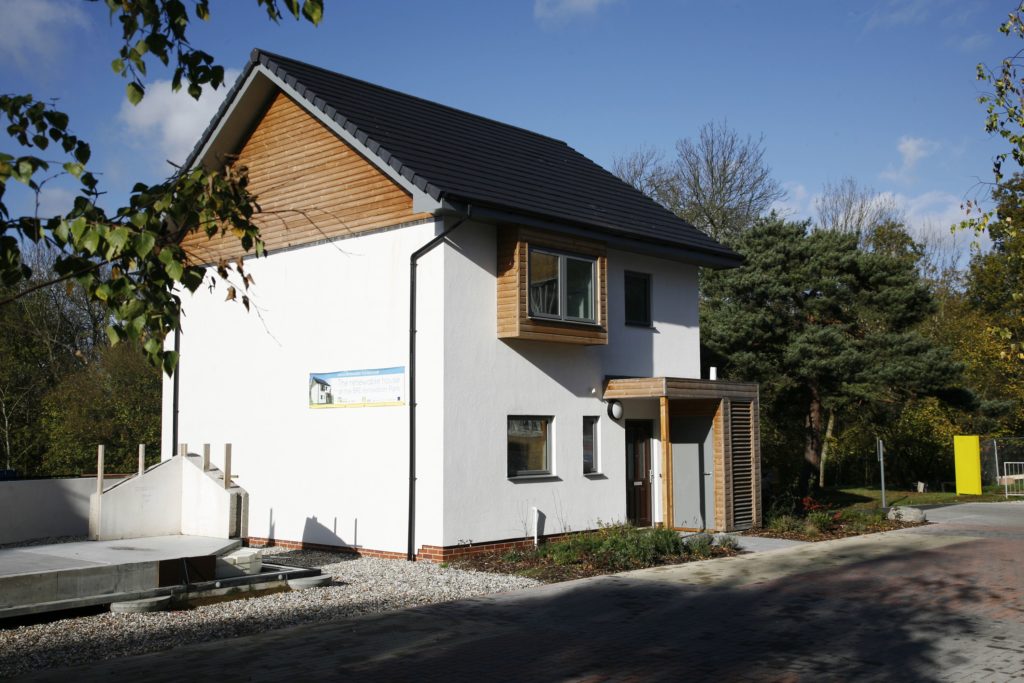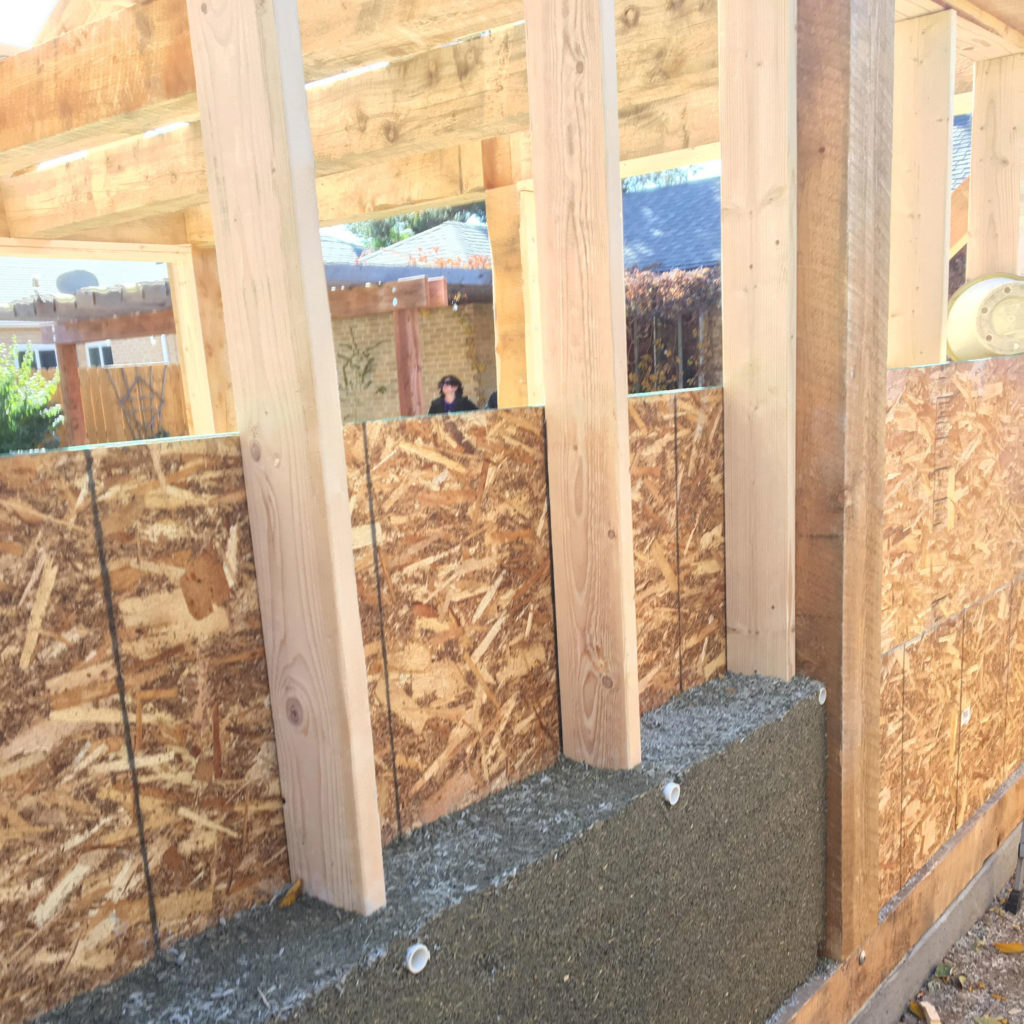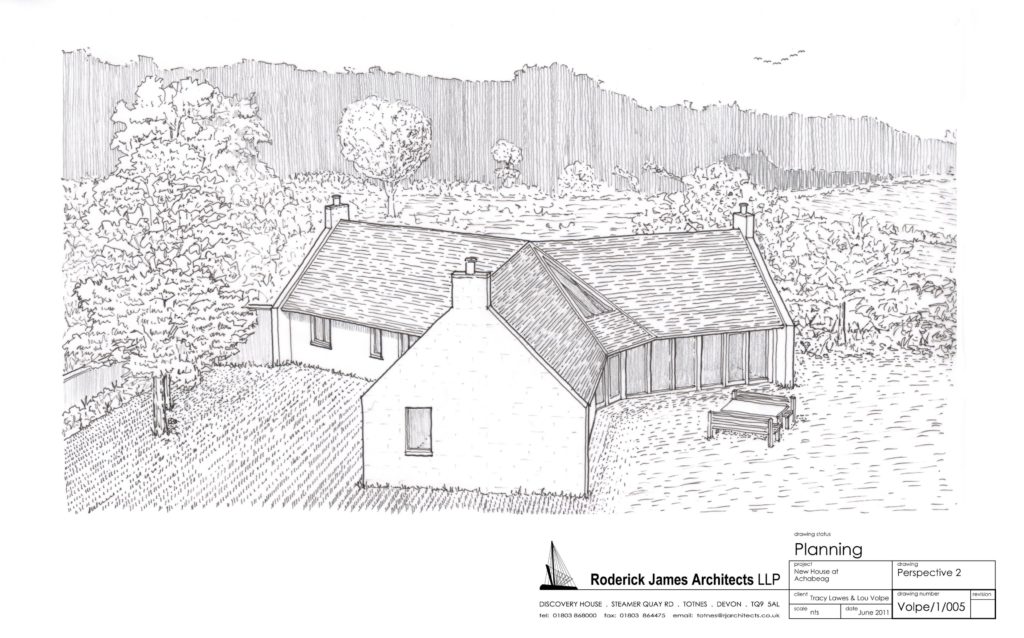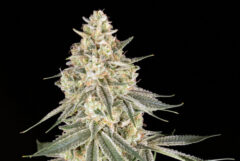All over the world, people are turning to “Eco Houses” in a desperate effort to live more sustainably. Hemp is already an important building material in the Eco House construction industry, and could prove crucial to building a more sustainable future. So how can we make the best and most cost-effective use of this precious, renewable resource?
Conventional building practices are becoming ever more unsustainable. The need to house the expanding populations adds to the ever-increasing pressure we are putting on our ecosystems, as we exploit natural resources with seemingly unstoppable haste.
We are packing more and more people into cities each year, and ravaging our environment in a desperate effort to sustain this inherently unsustainable lifestyle. Hemp Eco Houses may help us to build a more sustainable future.
Why we need to rethink urbanization
Due to this, many people are beginning to yearn for an alternative. Of course, it’s not just the unsustainability factor that really speaks to people – it’s the unnatural loss of community, the dislocation from our roots, the exposure to dangerous air pollution, the lack of sunlight and green spaces for kids to thrive and grow.
There are countless reasons that humans are better off living in smaller, greener communities. Slowly but surely, we’re starting to see recognition of this fact growing in the places it matters most – in the media, in the hearts and minds of the public, and in certain forward-thinking areas of government in various countries worldwide.
Another fundamentally important point is that housing in major, desirable cities is becoming insanely unaffordable throughout the world. For many, the idea of turning one’s back on “mainstream” society and heading for the hills is becoming too much to resist – and for some, it’s rapidly becoming one of the only choices left.
So why are we not all building hemp houses yet? This interesting video explains you why we still don’t:
Eco-houses may be part of the solution
So, you may be among the thousands of people currently weighing up your home-owning options, and you may have hit upon the idea of finding the right location to build your own sustainable eco-house.
Hemp is an increasingly popular choice of eco-friendly construction material. It has many advantages, including excellent moisture and temperature regulating properties, light, flexible yet extremely durable physical characteristics, and remarkable resistance to fire, rot and animal/insect infestations.
In this video, the fire-resistant quality of hemp is demonstrated. The fire test is done by Steve Allin, author of the book, “Building with Hemp” – definitely some worthwhile reading material if you are considering building a hemp house:
Building with hemp
Hemp is quick-growing, requires few pesticides or fertilisers, and the process of turning the harvested hemp into building materials like hempcrete is simple and environmentally friendly. Thus, we will focus on hemp as the primary constituent of our hypothetical eco-house – and to read more about its advantages and disadvantages compared with other eco-materials, check out this informative resource.
So how should we be going about turning our hemp house plans into reality?
The concept of buying a ready-built house is scary enough, and adding the responsibility of actually building it may be simply impossible for many. But if the circumstances are right, it could save a great deal of money, and it’s the ideal way to ensure that your home is just how you want it.
Here, we are not aiming to provide all the answers on how to build a hemp eco-house, but rather to provide readers with a general guide to the basic considerations and process needed to get started.
1. Planning & budgeting for your hemp house
Of course, the first major consideration is budget. Unless you have previous house-building skills (or are lucky enough to have a friend or relative with a construction company!) you will probably need to shell out money for an architect – so figure that into your expenditures right away.
Typically, architectural fees end up around 10-15% of the total construction cost, but this may vary depending on your specific location and plan.
An architect will take care of creating your house plan, according to the number of rooms and levels you require. Generally, smaller is better in sustainability terms – it reduces the literal footprint on the land, it reduces the cost of building materials, and it reduces the long-terms cost of heating and maintaining the property. In fact, so-called “tiny houses” are rapidly growing in popularity, so if you can make it fit, do it!
Take a look at the International Hemp Building Association’s list of partners for some initial ideas and options, and if you know of a reliable specialist local to you, why not let us know in the comments. You may end up helping out like-minded people in your area.
Having a basic plan before you buy land is a good idea – the plan can always be adapted as needed to fit the spot you eventually decide on. But with even a basic plan, you can calculate costs and budget far more effectively going in.
2. Finding the right place to build your hemp house
Then, the next major step is finding the right place to build your hemp home. This will depend greatly on local laws, regulations, prices and availability. Consider your site carefully. There may be online resources that will help you locate a plot of land – for example, this guide outlines how residents of the UK can find and obtain land to build on.
A site that has previously been built on may be the best option. For example, an old, tumbledown cottage could be torn down and replaced with something far more durable and sustainable.

In some European countries such as Spain and Italy, entire villages and small towns have been abandoned, partly due to the difficulty of hooking them up to the grid. However, if they can be repurposed for off-grid communities, they could solve numerous problems at once.
Generally, this approach is preferable to building on wild land – it’s hardly an eco-house if the habitats of countless birds and insects have been destroyed to create it! Plus, building on wild land requires additional work such as clearing the land of trees. Then, a water source needs to be considered. These are some of the challenges of building on wild land.
Brownfield sites may also be worth considering (anything that makes “greener” use of urban land is worth considering at this stage). However, as these are often contaminated with industrial waste, they may be a better option for long-term projects that involve hemp phytoremediation of soil for several years prior to actually building. Many people wish to grow their own food right next to their eco-house, so ensuring that soil is clean and healthy is essential in these cases!
While you are in the process of obtaining land (make sure you have planning permission from your local authority BEFORE investing in land), adapt and refine your strategy as needed to stay within budget and make the most effective possible use of available resources.
You may be planning to receive your utilities from the grid (now that renewable providers are becoming more widespread), but for many people interested in building an eco-home, energy self-sufficiency is a big factor. Therefore, you should be considering and costing your options here – solar panels, passive solar heating, waste-water recycling systems, rainwater collection, wind turbines, and even micro-hydroelectric.
Take a look at the Tiny House Blog’s tips for generating clean energy, and check out this Makeuseof post for an in-depth exploration of several options.
The cost of installing these technologies is rapidly falling, and providing a small home with 100% renewable, clean energy may be easier than you think!
3. Which materials do you need? Where will you source it?
Sourcing and obtaining your materials is the next major consideration. Typically, you’ll be using Hempcrete over a timber frame, although steel or concrete frames may also be used. One major disadvantage of Hempcrete is that it is not sufficiently load-bearing to support roofs or multiple stories without a frame. You’ll also typically be working on concrete foundations, as Hempcrete is not suitable for foundations.

So what is Hempcrete?
It’s a simple mix of hemp hurds, also known as “shivs” or “cores” – the woody inner part of the hemp stem that’s left over after all the fibres are removed – with lime and water. In building, “lime” refers to calcium oxide and calcium hydroxide derived from limestone and chalk. Mixtures of water, natural fibres and lime, which binds the fibres together, have been used in sustainable house-building for thousands of years.
So how can you obtain Hempcrete? If you have opted to work with a company specializing in hemp construction, they should have all the materials you need, and may have ready-made blocks and panels available. For example, the Netherlands-based hemp producer HempFlax offers a range of ready-produced hemp blocks and panels, as well as step-by-step consultancy services on how to use them.
If not, you can look for suppliers of hemp hurds and buy it in by the pallet or truckload to mix yourself – a process that is relatively simple, but requires the use of a large “forced action pan mixer” (in preference to a conventional drum mixer, which may not ensure the most even mix).
If you opt to mix your Hempcrete yourself, the cost will vary greatly according to local availability and laws. A pallet of 990 lb (450kg) unprocessed hemp hurds works out at around $510 in the US (€450), where cultivation of hemp is still not fully legal, and just €425 in the UK (£373), where hemp has been legal for decades.
Here is an excellent guide on mixing Hempcrete yourself, as well as advice on hemp-lime-water ratios (which are of the utmost importance for ensuring waterproofing and durability), and tips on how to build with it (even down to the number of hours/labourers needed per project).
To learn more about hempcrete, how it is manufactured and the ways it can replace cement, check out this video. Presenter Joyce Ohajah explains the potentials of hemp as an alternative, sustainable building material:
4. Could you live in a hemp-based eco community?
If you are considering building a hemp house, you may find that there are others in your local community that have similar ideas. If so, you may be able to cooperate to buy in the materials needed in bulk at more competitive prices, and exchange relevant local and hemp-specific knowledge.
There may already be local groups or communities that you can join, or you may be able to form a new organization of like-minded people, to work together on building eco-homes, or even to start whole new off-grid communities!
Hemp could be the ideal basis for long-term, off-grid sustainable communities, as just one hectare can yield enough hurds for a 135 m2 (1,450 sq ft) house. It can also be grown at or near the construction site to save even more on transportation costs!
Precedents are being set for this in many countries worldwide. In the small Scottish settlement of Achabeag, Hempcrete will be the basis for the twenty eco-houses they plan to build; the first two prototypes have already been completed. The planners hope that Achabeag will “form a blueprint for new, sustainable communities across the north and west of Scotland”.

Hempcrete was developed in France in the 1980s, based on a rediscovered historic recipe that had been in widespread use centuries ago. Since the modern form was developed by French company Isochanvre, it has been the basis for more than 250 homes in various locations across France.
Hemp houses have now been built in the UK, Italy, France, Belgium, Switzerland, the Netherlands, the USA, Canada, and many other countries worldwide. In 2014, the UK’s University of Bath started a three-year study to develop prefabricated Hempcrete panels, which could make building with hemp even easier in future! Unfortunately the current status of that research is unknown, but the mere fact that it’s studied shows how mainstream hemp is starting to become.
Right now, hemp is comparable in cost to conventional building materials, and has so many green credentials that it’s already worth serious consideration. Furthermore, as the industry expands and hemp increases in popularity, costs are likely to come down and building with hemp will become even more affordable!











Great post, I have learned many things about house building from your article, very helpful.
THANK YOU for the hempcrete coverage! Would love to read about US applications of this material, as I’m highly anticipating it.
Thank you for this detailed Hempcrete info resource.
HEMPCRETE!
thanh you
Thnx, for the opportunity to comment. Hemp will save the world..!
UGLYUGLYNOT IT IS COOL:O 😀
Amazing!
Hemp is definitely overlooked, and it is an industry governments really need to invest in. There are so many benefits associated with hemp – this being one of them! Thanks for sharing.
Thank you for perfect demonstration 🙂
Great, but that screeching noise makes it difficult to watch. I couldn’t watch it all.